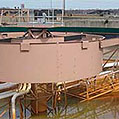Website content other than annual reports last updated May 31, 2013.
Watershed Counts
Watershed Lands
Land uses effect water quality. In forests and other areas with good vegetation cover and little disturbance most rainfall soaks into the soil rather than running off the ground, stream flows are fairly steady, and water quality is good. In built-up areas with pavement and buildings, little rainfall soaks into the soil, causing high runoff, stream flows with high peaks and low flows in between, and poorer water quality.
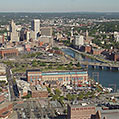
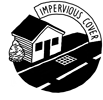
Impervious Cover
Roads, parking lots, driveways and building roofs cover landscapes and prevent rainfall from soaking into the ground. Impervious cover impacts water quality and water flow.
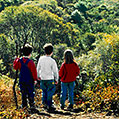
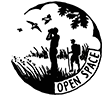
Open Space
Protected open space lands provide natural streamflow and ground water recharge areas, and buffers that filter stormwater.
Living in the Watershed
The Narragansett Bay Region is home to two million people and a wide variety of plants and animals, all contributing to quality of life and the economic prosperity of the region.
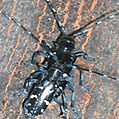
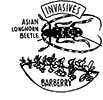
Invasive Species
When plants or animals are released into areas outside their native range, without their natural predators, they can grow and reproduce out of control, destabilizing the environment, harming native species, and impacting many human uses of the land and water, such as swimming, boating, [what else?], as well as simply the aesthetics of the landscape.
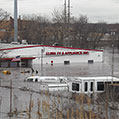
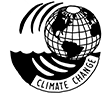
Climate Change
The impacts of climate change upon Rhode Island’s built and natural environments are wide ranging. The climatological sciences predict substantial impacts to Rhode Island, including stronger, more frequent hurricanes and Nor’easters; and greater frequency of other extreme weather events such as heat waves. Rapid alterations to terrestrial and aquatic ecosystems and the natural resource values they generate and sustain are also predicted.

Natural Resource Economics
Narragansett Bay plays a central role in the quality of life residents enjoy. The citizens of Rhode Island have made a significant investment in clean water infrastructure including drinking water storage and treatment, and wastewater collection and treatment systems. These investments have measurable economic returns, supporting the region’s travel and tourism, boating and fishing industries.
With support from both legislators and citizens, Rhode Island has made a strong commitment to environmental protection. Watershed Counts is the embodiment of that dedication, making sure Rhode Islanders can see and understand the trends in the environment and what needs to be done to protect and preserve these valuable natural resources.
Watershed Counts is a collaborative initiative of 60 partners, facilitated by the URI Coastal Institute in its role as Chair of the Rhode Island Environmental Monitoring Collaborative and the Narragansett Bay Estuary Program, working together to evaluate the conditions and trends of the land and waters of the Narragansett Bay Region. Watershed Counts indicators consider the region’s interwoven economic and environmental assets.
Freshwater
The Narragansett Bay Region supports almost 2,800 miles of rivers and streams and 44,000 acres of lakes and ponds. These fresh waters are a critical resource, providing habitat for fish and wildlife, exceptional opportunities for recreational boating, fishing and swimming and drinking water for almost two million people.
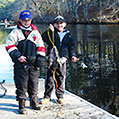
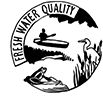
Freshwater Quality
Watershed Counts examines the quality of water for aquatic life, recreational uses like swimming and boating, and fish consumption (are the fish safe to eat?). The presence of invasive plants and cyanobacteria in lakes and ponds is also included in the assessment.
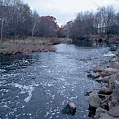
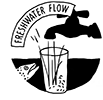
Freshwater Flow
Healthy rivers, streams and lakes are supported by natural flows. River flows are affected by withdrawals from lakes and groundwater, to supply drinking water to residents and businesses and support agriculture. Watershed Counts uses the demand for freshwater relative to the available supply as one metric for freshwater flow.
Saltwater
Narragansett Bay’s waters support valuable fisheries and a wide variety of other marine life. Throughout the region, people come to enjoy the Bay by sailing, swimming, fishing, surfing, and simply enjoying the Bay’s beautiful shoreline and vistas.

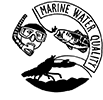
Marine Water Quality
Marine water quality is a complex issue and requires monitoring a range of parameters. Watershed Counts reports on dissolved oxygen (DO), with a special focus on conditions in the upper bay.
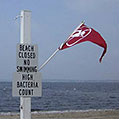
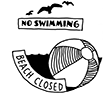
Beach Closures
Narragansett Bay and ocean beaches are an important part of the region’s economy. Beaches are closed by the RI Department of Health when bacterial (Enteroccoci) levels exceed state standards. Watershed Counts tracks these closures as a metric for the status of Rhode Island’s beaches and coastal waters.
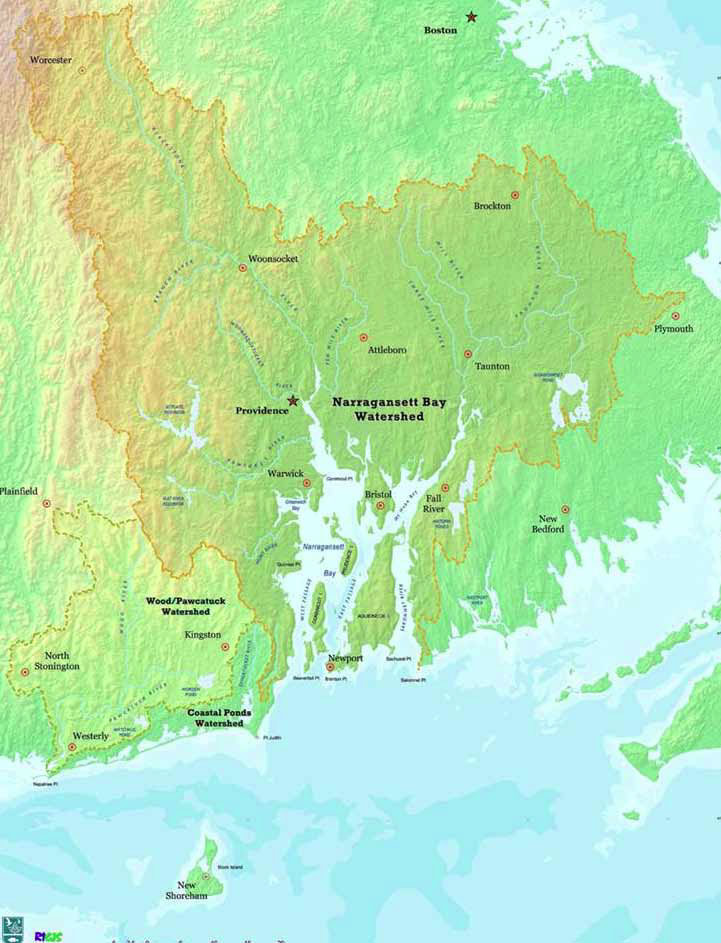
Map by Paul Jordan, RI DEM
